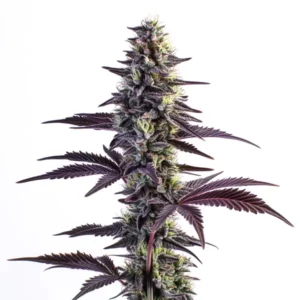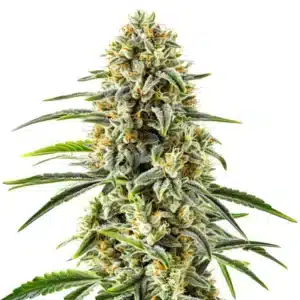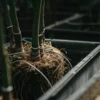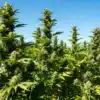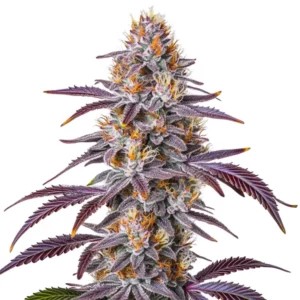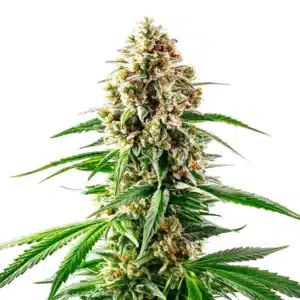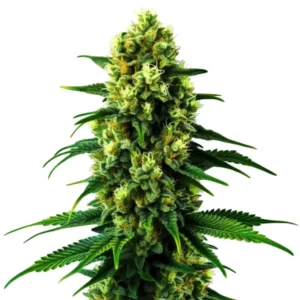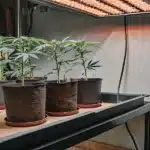
How Much Can a Weed Plant Produce? Yield Insights
Factors Influencing Yield
Strain Genetics and Potency
Genetic makeup shapes a cannabis plant’s destiny. Growers select strains based on visible traits and growth behavior, and they adjust their methods knowing how much can a weed plant produce in different conditions. Sativa varieties exhibit a tall frame and extended flowering period that encourage generous yields, while indica strains offer compact structures that produce dense bud clusters. Each strain carries unique genetic instructions that determine flower density and resin production, fueling the decision-making process in cultivation.
Cannabis strength ties directly to its genetics, which boost resin output and affect overall crop volume. Cultivators assess each strain’s characteristics carefully by grasping its inherent blueprint and matching it to their market demands. They focus on striking the right balance between yield and potency, maintaining a sharp focus on consumer preferences and ensuring that every plant achieves its maximum production potential.
Recommended Strains
Blue Grape Fuel
|
|
THC | 24% - 26% (High) |
|
|
Type | Feminized |
|
|
Yield | High |
|
|
Phenotype | 50% Indica / 50% Sativa |
Bruce Banner x Grape
|
|
THC | 15% - 20% (Medium) |
|
|
Type | Feminized |
|
|
Yield | High |
|
|
Phenotype | 45% Indica / 55% Sativa |
Growth Environment Variables
Environmental factors govern the growth and harvest of cannabis crops. Temperature, humidity, and airflow stand out as vital components that impact yield. Growers create optimal settings by managing a steady climate, ensuring temperatures remain within a beneficial range during the day and cooling evenings support plant metabolism. They monitor conditions actively to fend off mold and mildew, knowing that precise control drives the success of every harvest and allows each plant to thrive.
Light serves as a critical catalyst for robust growth. Indoor cultivators often rely on engineered lighting systems to provide consistent, even brightness, while outdoor farmers capitalize on the natural intensity of sunlight. Adjustments to these environmental details help maximize the inherent yield potential of each crop. By fine-tuning light, temperature, and other conditions.
Nutrient and Water Management
Nutritional balance and proper hydration define successful cultivation strategies. Farmers tailor nutrient mixes at different growth phases, favoring nitrogen during the vegetative stage and shifting to higher phosphorus and potassium as plants enter the flowering phase. They rely on routine soil assessments, and every watering session responds to the plant’s immediate needs, ensuring roots receive ample hydration without the risk of waterlogging. This careful calibration supports robust growth and plentiful harvests.
Irrigation and nutrient delivery transform garden efforts into thriving crops by actively boosting plant metabolism. Gardeners structure their schedules to prevent stress or overfeeding, and they monitor every detail to sidestep issues like root rot. Their commitment to perfecting nutrient and water regimens underpins the entire cultivation process.
Promos & Deals
Cultivation Techniques for Maximizing Yield
Training and Pruning Methods
Effective plant training elevates yield through methods such as topping, low-stress training, and super cropping. Growers snip off the main stem to encourage lateral branching, and they maneuver branches by gentle bending to create an even canopy that maximizes light exposure. They act decisively, knowing that techniques like these trigger impressive plant growth and ensure each bud develops fully.
Pruning also directs the plant’s energy towards significant flower sites by trimming excess foliage. Cultivators remove unproductive branches and dead leaves, channeling all resources into the main colas. They maintain a vigilant schedule of trimming and training that keeps the plant vigorous and resistant to pests. This hands-on process transforms potential into peak performance, crafting environments where every cannabis crop fulfills its fullest production capability.
Optimizing Light Cycles and Spacing
Manipulating light cycles represents a decisive strategy that boosts cannabis productivity. Indoor cultivators adjust daily cycles by providing extended light during vegetative phases and alternating equal periods during the flowering segment. They keep a constant vigil over schedules that spark vigorous growth and trigger early bloom, always factoring in how much can a weed plant produce under tailored conditions. Their enthusiasm for controlled light translates into impressive yields across growth cycles.
Equally, spacing plays an active part in maximizing production. Gardeners ensure that plants do not crowd each other by maintaining adequate gaps, which prevents competition for light and nutrients. They develop strategic layouts that allow every leaf to bask in optimum sunshine and every bud to receive its share of nourishment. Their proactive planning builds an environment where crop density aligns perfectly with elevated harvest figures.
Use of Advanced Growing Systems
Technological advancements reshape cultivation by introducing hydroponics, aeroponics, and aquaponics into everyday practice. Innovators control nutrient delivery with precision, using water-based systems that sidestep soil complications and accelerate growth. These modern setups empower growers to determine how much can a weed plant produce through detailed monitoring and immediate adjustments in nutrient levels. Pioneering techniques provide rapid results and clean, predictable harvests, elevating modern growing practices to new heights.
Advanced systems also integrate automated tools like climate control and smart irrigation, which reduce manual labor and provide continuous oversight. Technicians calibrate these systems to continuously fine-tune the environment, which drives consistent, high-quality yields. Every sophisticated gadget and refined technique proves invaluable in transforming raw potentials into bountiful harvests, keeping growers ahead of market demands while nurturing each plant with optimal resources.

Measurement and Analysis of Yield
Common Yield Metrics and Units
Measuring output accurately steers growers toward continual improvement. Experts assess yield using metrics like grams per square meter for indoor setups and per plant for outdoor environments. They gauge production efficiency with strict measurements that reveal the precise quantity of final harvest. Gardeners use these figures to recalibrate techniques when every gram matters for commercial success. Tracking metrics remains essential to achieving impressive harvests.
Detailed measurement efforts also embrace the use of dry weight data to account for moisture fluctuations during curing. Professionals weigh buds post-drying to derive realistic figures that mirror the market-ready product. This rigorous quantification helps refine practices, as every detailed metric offers crucial insights that empower cultivators to reach higher outputs while ensuring consistency and reliability throughout each growth cycle.
Tools for Yield Estimation
Modern instruments empower growers by offering digital tools to predict crop outputs. Mobile applications and specialized software provide immediate estimates by evaluating plant size, bud density, and environmental factors. These high-tech tools convert observational data into strategic decisions, boosting overall efficiency in cultivation. Gardeners embrace these resources as they continuously innovate their approaches to perfect yield forecasts.
Leveraging simple calculators and advanced imaging tools, cultivators assess potential and track progress meticulously. Software analyzes trichome density and floral structure, offering quantitative insights that guide future modifications. Technological innovations streamline day-to-day practices and optimize resource allocation, transforming traditional strategies into modern, data-driven operations that elevate every harvest’s reliability.
Comparing Indoor vs. Outdoor Production
Indoor cultivation grants growers complete command over environmental conditions. They benefit from predictable cycles, which allow for year-round production and steady yields measured on a per square meter basis. Resourceful indoor operators create consistent, high-caliber harvests through controlled lighting and climate systems.
In contrast, outdoor cultivation unleashes natural elements that enable larger plants and potential for massive outputs per plant. Outdoor farmers leverage expansive spaces and abundant sunlight to produce impressive harvests, even though they wrestle with unpredictable weather challenges. This dynamic setting inspires cultivators to master natural conditions while embracing risk, fueling an endeavor to capture every ounce of productivity from each thriving plant.
Economic and Market Considerations
Impact on Production Costs
Economic calculations turn cultivation into a strategic business venture. Growers analyze production costs meticulously, focusing on how much can a weed plant produce to lower expenses per gram and secure long-term profitability. They invest in efficient practices and modern equipment that slash energy costs and reduce waste while keeping production streamlined. Every financial decision builds a framework where every harvest contributes positively to the bottom line.
Farmers monitor the cost-to-yield ratio continuously, making prompt adjustments to cultivation techniques that lower expenses. They scrutinize expenses like electricity, nutrients, and labor to refine their models continuously. Dynamic budgeting and cost analysis empower cultivators to expand operations confidently, ensuring that every production cycle maximizes returns while maintaining sustainable practices in a competitive market environment.
Price Trends and Profitability
Market fluctuations challenge growers to adapt quickly in a dynamic economic climate. Cultivators analyze current price trends and make immediate adjustments to remain competitive. They strategize product mixes and scale operations to balance output with fluctuating consumer prices. This agile approach helps them navigate unpredictable markets with confidence and decisiveness.
Stakeholders assess market data regularly to refine pricing strategies that match both surplus and demand. They leverage advanced forecasting tools and engage in continuous dialogue with distributors to stay ahead of sudden changes. Active market management drives profitability as cultivators tailor their techniques and adjust supply to secure stable, consistent income amidst fluctuating trends.
Consumer Demand and Market Supply
Active consumer demand shapes the production landscape and informs the approach to maximizing harvest yields. Cultivators track trends and adjust cultivations smartl. They match their output to market desires, balancing quality with quantity for a product that resonates with buyers. Direct customer feedback fuels innovative cultivation practices and reinforces confidence in crop selections.
Market supply intricately intertwines with consumer preferences to determine pricing and availability. Producers manage crop volumes with sharp market insights, ensuring that supply meets seasonal demand without saturating the market. This responsive strategy fosters robust consumer relationships and healthy competitive positioning, enabling growers to adjust cultivation practices dynamically as market conditions evolve.
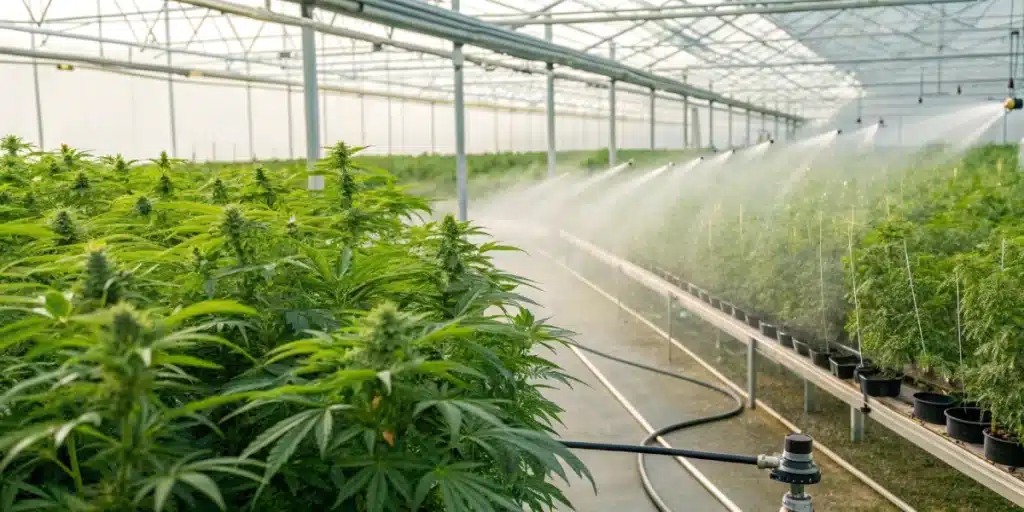
FAQs about how much can a weed plant produce
What are the average yield ranges for most strains?
Cannabis yields vary by strain and environment. Indoor setups typically produce 400 to 600 grams per square meter, while outdoor plants often yield 1 to 2 kilograms or more per plant. These figures depend on genetics, cultivation methods, and careful nutrient management.
How do indoor and outdoor yields compare?
Indoor operations maintain controlled conditions, achieving higher yields per square meter, whereas outdoor cultivation tends to favor larger individual plants that produce substantial amounts. Both systems offer unique benefits and present distinct challenges. The choice depends on available resources, risk tolerance, and the quest to maximize how much can a weed plant produce under specific environmental influences.
What factors contribute most to high yields?
Strain genetics, optimal environmental conditions, effective nutrient regimens, and advanced cultivation techniques each contribute considerably. Cultivators actively manage variables, focusing on maximizing every plant’s output. Their efforts combine strategic training, precise watering, and innovative technology to push boundaries in how much can a weed plant produce, ensuring consistently high returns from each crop cycle.


